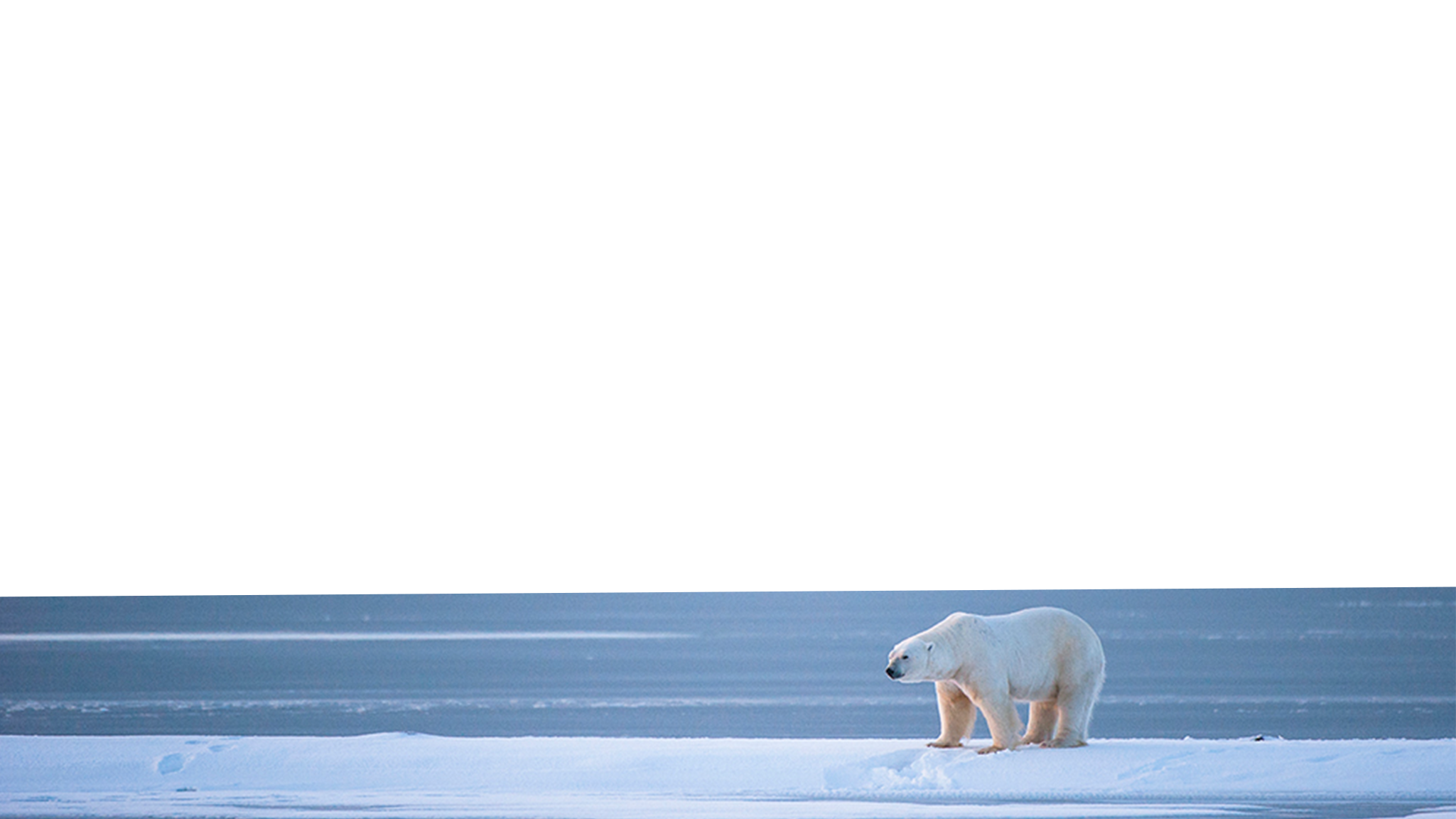



Polar bears are classified as marine mammals because they spend most of their lives on the sea ice of the Arctic Ocean. They have a thick layer of body fat and a water-repellant coat that insulates them from the cold air and water. Considered talented swimmers, they can sustain a pace of six miles per hour by paddling with their front paws and holding their hind legs flat like a rudder.
Polar bears spend over 50% of their time hunting for food. A polar bear might catch only one or two out of ten seals it hunts, depending on the time of year and other variables. Their diet mainly consists of ringed and bearded seals because they need large amounts of fat to survive.
Polar bears are at the top of the food chain and have an important role in the overall health of the marine environment. Over thousands of years, polar bears have also been an important part of the cultures and economies of Arctic peoples. Polar bears depend on sea ice for their existence and are directly impacted by climate change—serving as an important indicator species.
The loss of sea ice habitat from climate change is the biggest threat to the survival of polar bears. Other key threats include polar bear-human conflicts, unsustainable hunting and industrial impacts. As climate change forces polar bears to spend longer time onshore, they come in contact more often with Arctic coastal communities and others working in the Arctic. Unfortunately, these interactions sometimes end badly for both humans and bears.